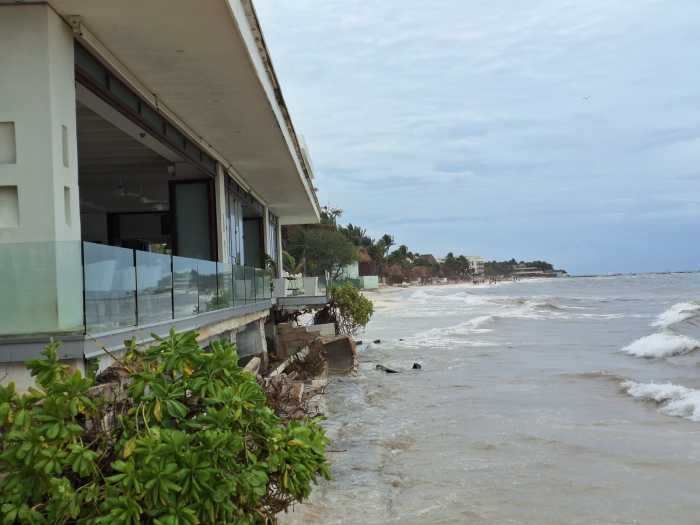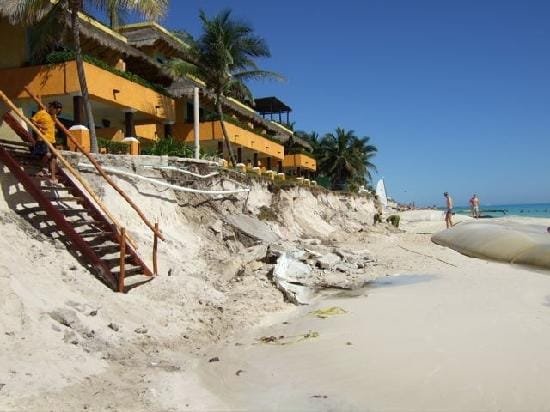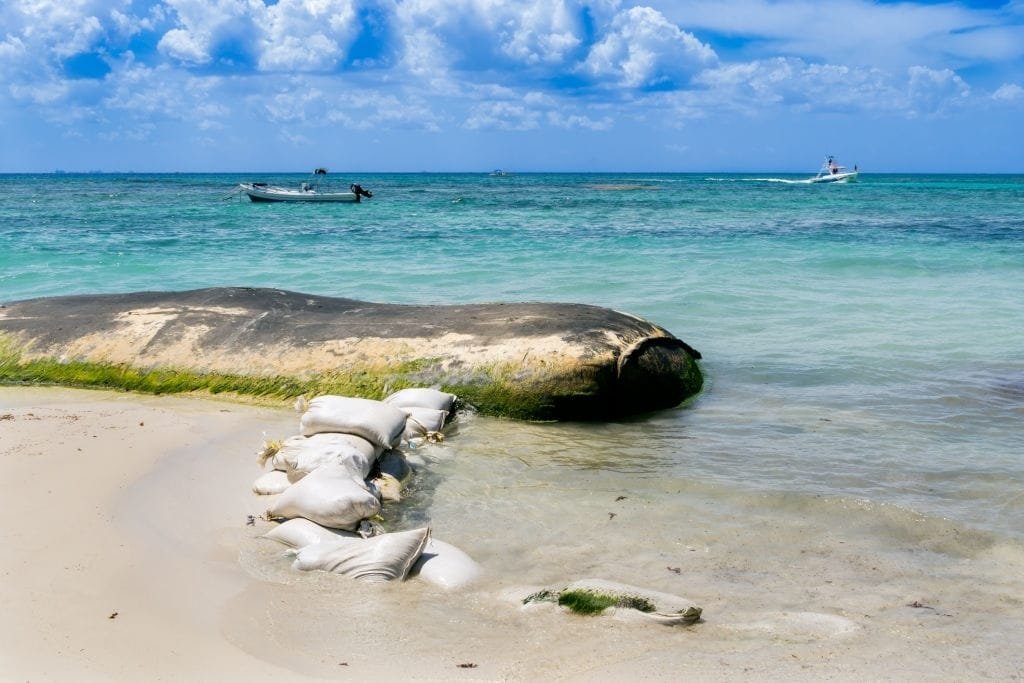Nearly two decades after the devastating impact of Hurricane Wilma in 2005, coastal erosion remains a significant threat to the beaches of northern Quintana Roo, a key tourist destination in Mexico. In response to this ongoing issue, the state government is planning to expand the beach recovery project that was first introduced in 2009 and updated in 2019. This expansion aims to cover areas that have been severely eroded.
Oscar Rebora, State Secretary of Environment, announced that a proposal has been submitted to the Ministry of Environment and Natural Resources (SEMARNAT). The proposal seeks to modify the Environmental Impact Statement (EIS) project’s scope, with a goal to increase the intervention areas by 30%. This proposed extension includes an additional six kilometers in Puerto Morelos, Cancun’s hotel zone, and Playa del Carmen, all of which are experiencing severe coastal deterioration.

Rebora explained, “Coastal erosion has been a persistent issue that has intensified after each hurricane that has hit the region. This is why we are justifying the need to include these critical areas, which were not considered in the original project.”
While the technical proposal is progressing, the costs and sources of funding for the project have not been finalized. In the project’s initial phase, resources were derived from an additional 25% charge applied to the Federal Maritime Terrestrial Zone (ZOFEMAT). This funding model could potentially be adjusted to support the project’s expansion. Rebora also emphasized the plan to engage the business sector once the technical details are ironed out.
Coastal erosion has been a recurring challenge for the region since 2005, when Hurricane Wilma caused extensive damage to infrastructure and coastal ecosystems. Subsequent hurricanes, including Dean, Emily, and Delta, have further exacerbated the issue, underscoring the need for a comprehensive and sustained solution.
Rebora acknowledged that while the project’s expansion aims to address the most affected areas, it will not completely eliminate erosion. Future stages of the project will aim to cover other areas.
“We maintain regular communication with the Federation to ensure the work is carried out efficiently and in line with environmental regulations. Despite the economic and operational challenges, we continue to make progress in protecting our natural heritage, which is also a critical driver of our economy,” Rebora concluded.

Beach reclamation along the Riviera Maya, including Cancún, has a long history tied to the region’s booming tourism industry and its vulnerability to natural events like hurricanes and erosion. Here’s an overview of significant efforts:
The Need for Beach Reclamation
Beach reclamation along the Riviera Maya, including Cancún, has a long history tied to the region’s booming tourism industry and its vulnerability to natural events like hurricanes and erosion. The coastline is naturally dynamic, shaped by tides, currents, and storms, but with the rapid growth of tourism in the 1970s, beaches became critical to the region’s economy.
This area is highly susceptible to damage from hurricanes, such as Wilma (2005), Gilbert (1988), and Delta (2020), which have stripped away significant portions of the beaches. Rising sea levels and climate change have accelerated erosion, and development near the shoreline has disrupted natural sand movement, further weakening the beaches.
Hurricane Wilma marked a turning point in Cancún’s beach reclamation history. After the storm left beaches severely eroded, a 2006 restoration project funded by the Mexican government and hotel associations dredged sand from offshore sandbanks to replenish 12 kilometers of beach. Over 1.3 million cubic meters of sand were added, but the project lacked long-term planning and the restored beaches eroded quickly.
In 2009–2010, the government launched one of the region’s largest reclamation projects, covering Cancún, Playa del Carmen, and Cozumel. This $70 million effort involved dredging sand from underwater banks and using it to restore affected beaches, with 6.1 million cubic meters added to Cancún’s coastline alone.
While these projects were ambitious, they raised environmental concerns, including damage to marine ecosystems such as coral reefs and sea grass beds.

In more recent years, smaller-scale reclamation projects followed storms like Hurricane Delta in 2020, particularly in Cancún and Tulum. These efforts have highlighted the ongoing challenge of maintaining beaches in the face of constant erosion. Erosion has been especially problematic in areas like Playa del Carmen and Tulum, where debates continue about how to balance conservation and development.
Despite their importance, these efforts face criticism. Many projects are expensive and provide only temporary solutions, failing to address root causes like overdevelopment and climate change. Environmental concerns persist, as dredging and other techniques harm marine habitats.
Additionally, the influx of sargassum seaweed in recent years has compounded the problem, with its buildup worsening erosion and damaging beaches.
Looking ahead, future efforts are increasingly focused on sustainability, such as using geo-tubes (fabric tubes filled with sand) to stabilize beaches, restoring coral reefs and mangroves to buffer storm surges, and limiting construction near the shoreline to preserve natural dunes. Balancing the economic importance of beaches with environmental preservation remains a complex challenge for the Riviera Maya.
Discover more from Riviera Maya News & Events
Subscribe to get the latest posts sent to your email.
